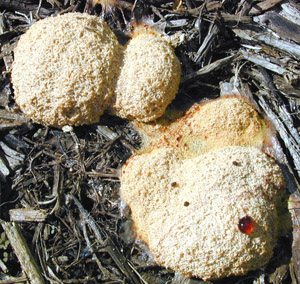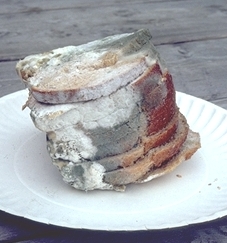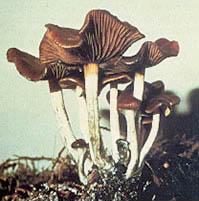 username@email.com
username@email.com
Viruses are not part of any organismal taxonomy, because it is not clear if viruses are living things. They are not cells, as they do not perform metabolic functions on their own, and outside a host, a virus cannot survive. It has no independent metabolism, respiration, motility, reproduction, or any other function that defines a living organism.
Viruses are snippets of DNA and/or RNA wrapped in a protein coat. Receptors on the protein coat are specific for the type of cell the virus infects. Only when a virus infects its target cell can it hijack the cell’s abilities to replicate and spread. The virus’s sole purpose is to enter a cell or inject its DNA into a cell, commandeer its reproductive processes, and make the cell replicate the virus’s DNA. Some viruses destroy the cells they infect; others do not. There are viruses adapted to infect just about every type of cell there is, including bacteria. These viruses are called bacteriophages.
Different viruses have different modes of transmission to a host, whether through the air, contaminated food or water, or direct contact. Once it enters a host, the virus makes its way to the target cell. The receptor on the virus coat (the key) mimics the receptor on the cell surface (the lock), allowing the virus to attach to the cell. Then the virus enters the cell or injects its DNA into the cell. Viral proteins have many foul ways to take over a cell’s reproductive machinery. Some viral proteins kick a resting cell into reproductive mode; others force the cell to reproduce only viral DNA. In some cases, as with some enteric adenoviruses (intestinal viruses), a single infected cell may churn out hundreds of thousands of newly formed viruses in one day.

The Marburg virus, which causes an extremely virulent disease
Viruses are also amazingly good at avoiding the attacks of the host’s immune system. Many viruses are adept at masking or shutting down cellular production of interferon, which calls the immune system into play. Viruses’ evasion tactics are wildly inventive—a product of natural selection. Hepatitis B virus has its host cell create and eject empty decoy viral envelopes, which are attacked by the immune system while countless real viruses escape and continue to reproduce. Retroviruses, such as HIV, integrate their DNA into the DNA of infected cells. Every time the cell replicates its DNA, the viral DNA is also copied. After a period of replicating in cells, the HIV infects helper T-cells, that activate virus-specific T- and B-cells designed to fight pathogens. Thousands of HIV genomes are replicated in helper T-cells, which then die and cannot activate the immune system. So the immune system pumps out more helper T-cells, which become infected, make more HIV, and die. In short, the more helper T-cells the immune system makes to counteract an attack, the more virulent the disease becomes. Quite insidious.
Now is a good time to review viruses interactively. Please click on the screen below and explore the world of viruses.
Prions are tiny proteins that have somehow been altered from their normal configuration to become self-replicating infectious entities. The most famous has become Mad Cow Disease (bovine spongiform encephalopathy, or BSE) and is caused by prions in the brain that are able to change normal brain proteins into prions. In BSE (and similarly in Creutzfeld-Jakob disease, kuru in humans, and scrapie in sheep), normal brain proteins that can be lysed and removed by enzymes when they die are transformed into prions that are invulnerable to the enzymes. The abnormal proteins accumulate in the brain and create holes. Prion diseases are degenerative and invariably fatal. Scientists have been unable to find any trace of genetic material (either DNA or RNA) in prions or in infected brains. Prions also do not elicit an immune response from the body. Prions are so strange that their existence and behavior are not well understood despite focused research. The good news is that not all prions are potentially bad. There are many naturally occurring prions in yeast and other fungi that are actually beneficial for the organism. Fungi utilize prions in kin recognition and sexual selection.
How do viruses perform the function they have in common with living organisms?
The correct answer is C. Viruses only function is to reproduce their genetic material, which can be accomplished only when they get an infected cell’s reproductive processes to replicate their DNA for them. Locomotion refers to an organism’s expended energy to move on its own. Viruses cannot move on their own and have no energy of their own to expend. Viruses also never metabolize fuel; they only hijack cells’ reproductive apparatus. Living host cells produce interferon to signal infection to the immune system.
The last, and perhaps the strangest group of the Protista, are the slime molds. Some taxonomists place the slime molds in their own subkingdom of fungi, and sometimes call them lower fungi. Taxonomists who classify them with protists point out their close connections to amoebas. Despite their nomenclatural handicap, slime molds are fascinating organisms. There are two distinctly different, and perhaps totally unrelated, types of slime molds.
Acellular slime molds (Division Myxomycota) create a slimy mass called a plasmodium, akin to a monstrous amoeba, that slithers slowly over moist areas in forests. The plasmodium may contain pigments, likely used as photoreceptors that give them a beautiful color. Acellular slime molds use phagocytosis to feed on bacteria, spores, and other bits of decayed organic matter. The plasmodium is actually a cell-like organism containing many nuclei, which result from numerous mitotic divisions. Acellular slime molds spend their nonreproductive lives as creeping protoplasm that continues to grow (up to 50 g) as long as there is food to eat. When times are tough, the plasmodium breaks up into globs of protoplasm. Each globule develops into a sporangium perched atop an elongated stalk. Then meiosis occurs and produces haploid spores. The spores are released into the air until they land in a new, suitable site, where each will divide and, after several intermediate forms, become new plasmodia. To avoid confusion, we need to make sure to realize that this plasmodium (name of a body form) is different from the other organism that causes malaria, Plasmodium (the genus of protozoan passed on by mosquitoes).
Cellular slime molds (Division Acrasiomycota) are not plasmodia; instead, as cells, they exist as free-living amoebas in damp environments. When conditions dry out, or when food becomes scarce, these slime molds emit a pheromone called cyclic AMP, or cAMP. The call of cAMP is irresistible and causes hordes of amoeboid slime molds to congregate into a pile. It is then that truly bizarre things happen. Together, these once-independent cells form a primitive type of multicellular organism with specialized cells. In its first incarnation, this organism becomes a slug-like entity, actually moving around like a slug. Soon a fruiting body, made up of some of its amoeboid components, is extruded by the slug-like entity. A few of these cells are then transformed into spores. A sexual cycle fuses two haploid spores, which can then develop into more cellular slime molds.

Example of the slime molds
Both Divisions of slime molds share
The correct answer is C. Both types of slime mold reproduce with spores but only cellular slime molds produce cAMP. Only acellular slime molds contain many nuclei and only cellular slime molds congregate to form a multicellular organism.
Members of the Kingdom Fungi are mostly coenocytic or multicellular organisms that are made up of masses of filaments, or hyphae (singular hypha), though some, such as yeasts, are unicellular. Collectively, all the hyphae of one fungal organism are called a mycelium, which makes up the main body of the fungus. The mycelium grows from the tip of the hyphae, and may reach a length of one kilometer in only 24 hours. The part of fungi that most people are aware of—mushrooms—are simply hyphae that are compacted and “packaged” to form the spore-producing fruiting bodies of the otherwise hidden organism. Curiously, the cell walls of fungi contain chitin, the same material that makes up insect exoskeletons, and not the cellulose that stiffens plant cells. Some fungi are parasites that feed directly from the host. Most fungi are characterized by their unique heterotrophy. Fungi release digestive enzymes onto something edible in surrounding substrate. The enzymes dissolve some of the nutritional material in the food, and the fungus absorbs these molecules. Fungi, with bacteria, are the primary decomposers of organic material.
Fungi are famous for producing spores and they may reproduce both sexually and asexually, the latter being the spore-producing stage. Spores are produced asexually in structures called sporangia, and they are held in specialized hyphae called sporangiophores. Fungal spores have a tough coating that allows them to survive unfavorable conditions until they find a suitable environment in which to grow. Fungi may also reproduce asexually through fragmentation of the mycelium, with each section developing into a new organism.
Sexual reproduction in fungi occurs when some hyphae produce a structure called a gametangium. Gametes may be fused in the gametangium and then released, or two gametangia may fuse to form a kind of fertilized egg.

Table of fungal diversity and reproduction
The Kingdom Fungi is comprised of six major Divisions, five are characterized by the structure and the sexual reproductive pattern of its members. The members of a sixth Division, Deuteromycota, or imperfect fungi, do not reproduce sexually.
Division Chytridiomycota, the chytrids, is likely the most ancient group of fungi. Most are small, produce a small mycelium, and anchor themselves to a substrate via rhizoids, which absorb nutrients. Rhizoids resemble hyphae but contain no nuclei. The chytrid sporangium contains numerous nuclei, and during reproduction each separates into a flagellated spore. Chytrids are the only fungi with flagellated gametes. Chytrids occur in both salt water and fresh water, as well as in damp soil. They may also live parasitically on algae, plants, or other fungi. Interestingly, these ubiquitous fungi have been implicated in global declines of amphibians and may be at least partially responsible for many widespread die-offs in frogs and salamanders from Australia to Costa Rica.
Division Oomycota contains species that, as its name suggests, produce eggs (as well as sperm) during a sexual reproductive phase. Eggs and sperm are borne on separate gametangia and fuse to form zygotes. Oomycetes also reproduce asexually with spores that have two flagella. Most oomycetes are aquatic, but some species are terrestrial. Oomycetes have unique cell walls for fungi because they are made up mainly of cellulose, not chitin. Nearly all oomycetes live on decaying organic matter. Some are parasitic and others pathogenic—most notably Phytophthora infestans, the fungus responsible for killing the potatoes that led to the Irish Potato Famine.
Fungi in the Division Zygomycota are all terrestrial, living mainly in soil, where they consume dead organic material. Some members of this Division are parasites or pathogens that infect mainly plants, insects, or tiny soil fauna. Zygomycete spores have no flagella. Sexual reproduction occurs when two different mating hyphae fuse, forming gametangia, which themselves fuse to form a multinucleated zygospore.
A common, though unwelcome, member of this Division is black bread mold, Rhizopus stolonifer. This mold has rhizoids that anchor it to bread or fruit and whose hyphae worm their way through and rot it.

Example of common bread mold
Division Ascomycota, the largest with 30,000 species, includes the yeasts, powdery mildews, black- and green-molds, as well as the highly valued morels and truffles which look more like regular mushrooms. Many ascomycetes are pathogens, particularly of plants, causing such devastating diseases as Chestnut Blight and Dutch Elm Disease. Their hyphae are divided by walls, or septa, each containing a separate nucleus. Spores may be formed either sexually or asexually. The tiny sac, called an ascus, produced during sexual reproduction is characteristic of ascomycetes. Gametes and gametangia are produced before the ascus, which, after several meiotic and mitotic divisions of the gametes, holds eight haploid spores. The ascus bursts to release them. Yeasts are small, oval, unicellular ascomycetes noted for their asexual reproduction through budding. Sexual reproduction may also occur when two yeast cells, or ascospores, join to form a zygote.
Division Basidiomycota includes the familiar edible mushrooms. A mushroom is the basidiocarp, a spore-producing structure composed of compacted hyphae, of basidiomycetes. The body of basidiomycetes is the mycelium growing invisibly on a nutritional substrate, such as soil or a tree trunk. A single basidiomycete mycelium may grow to an astonishing 35 meters in diameter, though mushrooms usually form only around its edges. This accounts for the fairy rings of mushrooms that appear in a field after a good rainfall. The moisture triggers the production of new protoplasm in the mycelium, and the protoplasm forms hyphae that burst out of the ground as mushrooms. Sexual reproduction involves meiosis and fusion of haploid nuclei, which occurs externally in specialized hyphae called the basidium, where the spores form. The basidiomycetes comprise the most common and popular edible field mushroom (Agaricus campestris), as well as numerous types of poisonous mushrooms, notably Amanita. Psilocybe mexicana, a hallucinogenic mushroom, is also in this group. These are all gill fungi, so called because gill-like slots under the mushroom cap hold their spores.

Example of common basidiocarp mushroom
Ascomycetes are the fungi almost always associated with green algae or cyanobacteria to form lichens. Lichens thrive in harsh, adverse environments, such as deserts or tundra. Lichens do not need an external source of food, as their photosynthetic component provides it for them, though the fungus part of the lichen may derive certain minerals from the substrate to which it is attached. There are about 25,000 different types of lichens, each characterized by the species of fungus it contains. About 26 genera of photosynthetic algae or cyanobacteria live symbiotically in lichens with their fungus partner.

Example of a Lichen–the symbiotic relationship between a fungus and a cyanobacterium
The Division Deuteromycota contains the imperfect fungi that cannot reproduce sexually. Many fungi in this Division are pathogenic parasites of plants or animals. In humans, ringworm and athlete’s foot are infections caused by these fungi. Deuteromycetes are not all bad, however; some are instrumental in making Roquefort and Camembert cheeses, as well as in the production of penicillin.
Mycorrhizae are the symbiotic relationships between a fungus and the roots of vascular plants. The fungi help the plant roots absorb nutrients, particularly phosphorus. In exchange, the plant roots supply the fungi with food, usually sugars or amino acids. About 90 percent of vascular plants have endomycorrhizae, or fungal hyphae in their root cells. Research has found that many vascular plants cannot survive apart from this intimate relationship with fungi. Mycorrhizae are one of the most important commensalisms that occur in nature.
The main body of a fungus is the
The correct answer is D. The mycelium is the body of a fungus made up of all the hyphae. Hyphae are the filaments that make up the body of the fungus, or mycelium. The sporangium is the structure in which spores are produced and the basidium is a structure unique to basidiomycetes where the fungus’s spores are produced.
Members of the Division Deuteromycota are called Imperfect Fungi because they
The correct answer is B. Deuteromycetes do not have the ability to reproduce sexually, unlike other fungi. Deuteromycetes do produce spores, ascomycetes exist symbiotically with algae or cyanobacteria as lichens, and while some deuteromycetes are parasitic, others, such as those used to produce cheese, are not.
Gill fungi release spores from which structure?
The correct answer is C. Among the gill fungi in the Division Basidiomycota, spores are released from the gill-like furrows under the cap of the mushroom, or fruiting body. The gametangium is not part of the mycelium but is a specialized structure produced by hyphae for the purpose of sexual reproduction. B is not correct because it refers to the site where mushrooms emerge onto the surface from the mycelium below ground. Rhizoids anchor mycelium to the substrate but do not release spores.
Lichens are organisms in which ascomycetes fungi live symbiotically with
The correct answer is A. Lichens are algae or cyanobacteria living symbiotically with ascomycetes fungi. Mycorrhizae are fungi that live on or in the roots of vascular plants, spores are the mode of reproduction in fungi and do not involve any symbiotic relationship with other organisms. Ergot is a disease of rye grain caused by one type of ascomycetes.